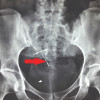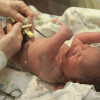
 IJCP Editorial Team
IJCP Editorial Team
Predicting Fluid Responsiveness in Children with Shock
The goal of the study was to assess the sensitivity and
specificity of the inferior vena cava (IVC) distensibility index (∆IVC) and
respiratory variation in peak aortic blood flow velocity (∆Vpeak) in predicting
fluid responsiveness in ventilated children with shock.
This prospective observational study included consecutively
enrolled children aged 2 months to 17 years requiring fluid bolus in a
pediatric ICU between 2019 and 2020. ∆IVC and ∆Vpeak were measured before and
after a 10 ml/kg fluid bolus, and responders were defined as those with a change
in stroke volume index (SVI) of ≥10%.
Overall, 37 ventilated children were enrolled, of whom 62% were
fluid responsive. The median ∆IVC was higher in responders than the
non-responders, and the mean ΔVpeak was also greater in responders. The predictive
performance of ∆IVC and ΔVpeak was equivalent, with areas under the ROC curve
of 0.73 and 0.78, respectively. The best cut-off values for predicting fluid
responsiveness were ∆IVC of 23% (sensitivity 60.8%, specificity 85.7%) and
ΔVpeak of 11.3% (sensitivity 74%, specificity 86%).
The findings indicated that both ∆IVC and ΔVpeak were effective predictors of fluid responsiveness in ventilated children with shock.
Source: Banothu KK, Sankar J, Pathak M, Kandasamy D,
Gupta P, Kabra SK, Lodha R. Indian Journal of Pediatrics. 2023 Jun 6:1-6.

IJCP Editorial Team
Comprising seasoned professionals and experts from the medical field, the IJCP editorial team is dedicated to delivering timely and accurate content and thriving to provide attention-grabbing information for the readers. What sets them apart are their diverse expertise, spanning academia, research, and clinical practice, and their dedication to upholding the highest standards of quality and integrity. With a wealth of experience and a commitment to excellence, the IJCP editorial team strives to provide valuable perspectives, the latest trends, and in-depth analyses across various medical domains, all in a way that keeps you interested and engaged.













Please login to comment on this article